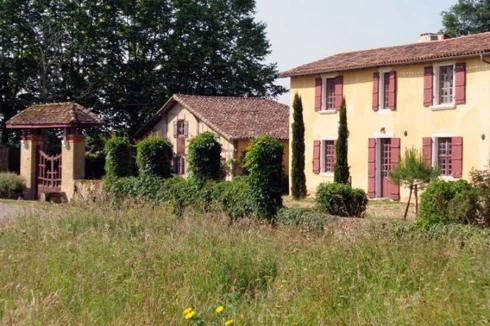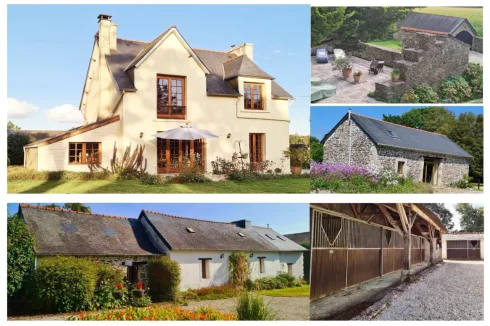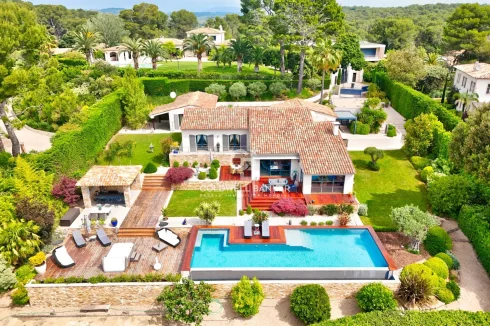Rent Controls in France
Friday 08 September 2017
Rent controls do exist on private lettings in France, but the scope and impact of these controls differs by geographic location.
In most areas of the country the level of the rent on a new tenancy can be freely determined between a prospective tenant and the landlord. The only controls that exist are what the market is prepared to pay.
However, within designated areas of housing shortage, called zones tendues*, there are legal controls.
In these areas, on the re-letting of a property a landlord is obliged to maintain the rent at the same level as the previous tenant unless there had been no increase in the past year. Even if there was no increase the rent can only be increased by reference to an index, called the L’Indice de Référence de Loyers (IRL).
In addition, in Paris and Lille a double control applies, as a cap has also been set on the maximum rents that can be charged, based on an official loyer de référence expressed in rent per m2. Rents cannot by greater than 20% of the loyer de référence, although if the property has special characteristics that justify it, a landlord is also entitled to add a complément de loyer.
The capping of rents is a recent measure whose impact so far has been marginal, mainly due to the fact that most private landlords fail to comply with it.
In addition, there is a growing resistance by estate agents to provide the rental observatory set up by the government to create loyers de référence with details of rents in the properties managed by them. Without the statistics provided by the agents it is difficult to see how the reference rents can be created.
The fact that controls are only imposed on re-letting of an existing rental property in urban locations means that, outside of Paris and Lille, no controls exist on the rent that can be charged on a rental property coming onto the market for the first time.
Indeed, where the previous tenant vacated the property at least 18 months previously, new lettings in areas of housing shortage are also exempt from rent controls. Properties with manifestly low rents can also be revised. In both cases formal procedures apply.
In appropriate cases a landlord can also impose a service charge, which is outside of the scope of all rent controls.
Once a rent has been agreed, and a tenancy agreement has been signed, wherever the property is located, there are specific controls on further increases in the level of the rent during the period of the tenancy, with the landlord obliged to use the IRL, provided there is express provision for annual revision in the tenancy agreement.
In all cases, the controls only exist if the property is the main home of the tenant. Accordingly, there are no rent controls on seasonal or holiday lettings, or other lettings where the property is not the principal residence of the tenant.
There is also specific provision for rental increases where major works have been undertaken, or where the previous rent was manifestly too low in comparison with other local rents. Once again, due procedure must be applied and in Paris and Lille the loyer de référence continues to apply.
The level of rents varies enormously over the country, and they can even do so within regions for similar properties, so it may not be easy to determine the market rent for a property. You need to look at local adverts to see the rents that are being advertised and perhaps visit some of the advertised properties to see how they compare.
*Zones Tendues : Ajaccio, Annecy, Arles, Bastia, Bayonne, Beauvais, Bordeaux, Draguignan, Fréjus, Genève-Annemasse, Grenoble, La Rochelle, La Teste-de-Buch-Arcachon, Lille, Lyon, Marseille - Aix-en-Provence, Meaux, Menton-Monaco, Montpellier, Nantes, Nice, Paris, Saint-Nazaire, Sète, Strasbourg, Thonon-les-Bains, Toulon, Toulouse.
However, within designated areas of housing shortage, called zones tendues*, there are legal controls.
In these areas, on the re-letting of a property a landlord is obliged to maintain the rent at the same level as the previous tenant unless there had been no increase in the past year. Even if there was no increase the rent can only be increased by reference to an index, called the L’Indice de Référence de Loyers (IRL).
In addition, in Paris and Lille a double control applies, as a cap has also been set on the maximum rents that can be charged, based on an official loyer de référence expressed in rent per m2. Rents cannot by greater than 20% of the loyer de référence, although if the property has special characteristics that justify it, a landlord is also entitled to add a complément de loyer.
The capping of rents is a recent measure whose impact so far has been marginal, mainly due to the fact that most private landlords fail to comply with it.
In addition, there is a growing resistance by estate agents to provide the rental observatory set up by the government to create loyers de référence with details of rents in the properties managed by them. Without the statistics provided by the agents it is difficult to see how the reference rents can be created.
The fact that controls are only imposed on re-letting of an existing rental property in urban locations means that, outside of Paris and Lille, no controls exist on the rent that can be charged on a rental property coming onto the market for the first time.
Indeed, where the previous tenant vacated the property at least 18 months previously, new lettings in areas of housing shortage are also exempt from rent controls. Properties with manifestly low rents can also be revised. In both cases formal procedures apply.
In appropriate cases a landlord can also impose a service charge, which is outside of the scope of all rent controls.
Once a rent has been agreed, and a tenancy agreement has been signed, wherever the property is located, there are specific controls on further increases in the level of the rent during the period of the tenancy, with the landlord obliged to use the IRL, provided there is express provision for annual revision in the tenancy agreement.
In all cases, the controls only exist if the property is the main home of the tenant. Accordingly, there are no rent controls on seasonal or holiday lettings, or other lettings where the property is not the principal residence of the tenant.
There is also specific provision for rental increases where major works have been undertaken, or where the previous rent was manifestly too low in comparison with other local rents. Once again, due procedure must be applied and in Paris and Lille the loyer de référence continues to apply.
The level of rents varies enormously over the country, and they can even do so within regions for similar properties, so it may not be easy to determine the market rent for a property. You need to look at local adverts to see the rents that are being advertised and perhaps visit some of the advertised properties to see how they compare.
*Zones Tendues : Ajaccio, Annecy, Arles, Bastia, Bayonne, Beauvais, Bordeaux, Draguignan, Fréjus, Genève-Annemasse, Grenoble, La Rochelle, La Teste-de-Buch-Arcachon, Lille, Lyon, Marseille - Aix-en-Provence, Meaux, Menton-Monaco, Montpellier, Nantes, Nice, Paris, Saint-Nazaire, Sète, Strasbourg, Thonon-les-Bains, Toulon, Toulouse.
Thank you for showing an interest in our News section.
Our News section is no longer being published although our catalogue of articles remains in place.
If you found our News useful, please have a look at France Insider, our subscription based News service with in-depth analysis, or our authoritative Guides to France.
If you require advice and assistance with the purchase of French property and moving to France, then take a look at the France Insider Property Clinic.





